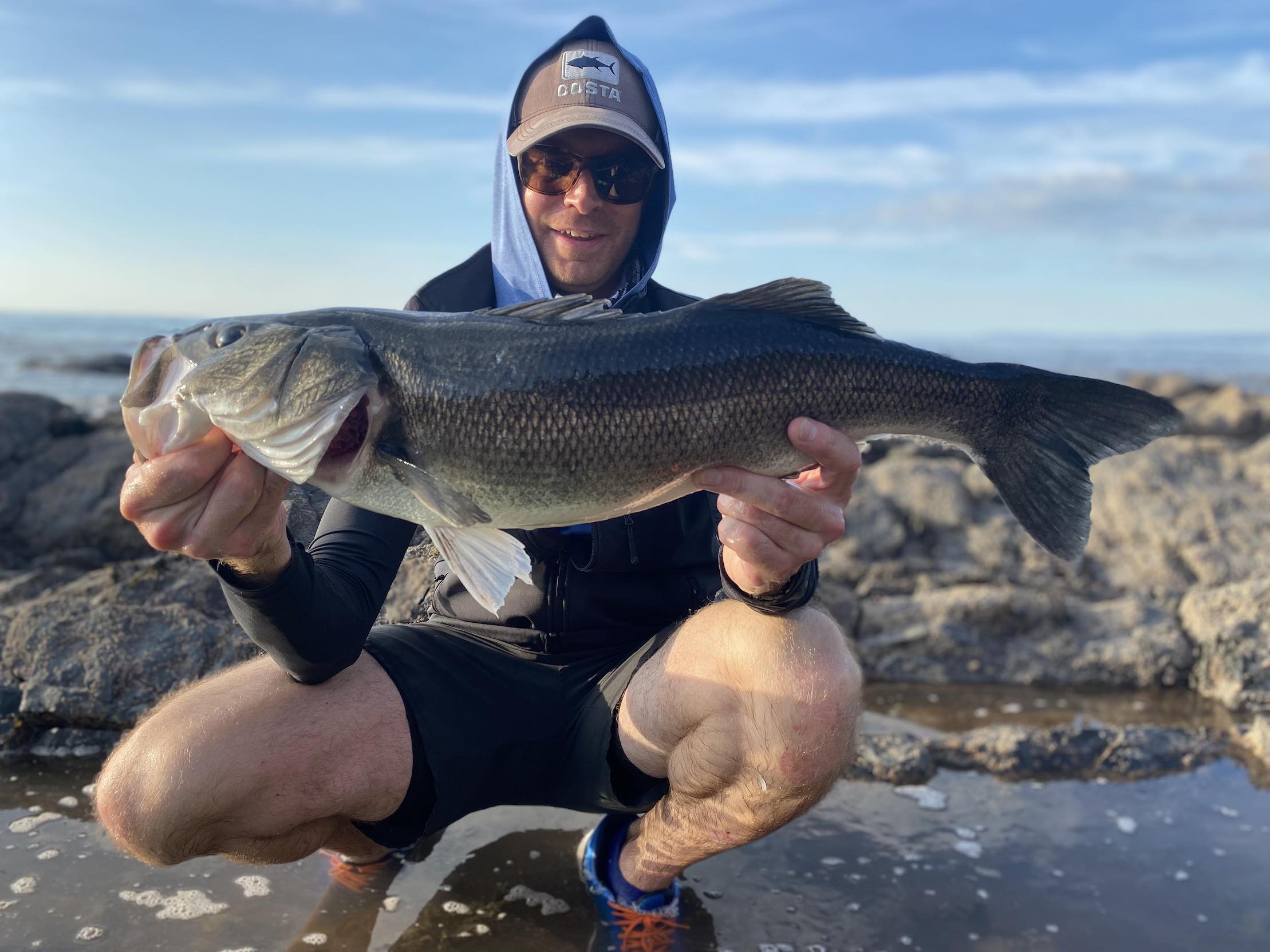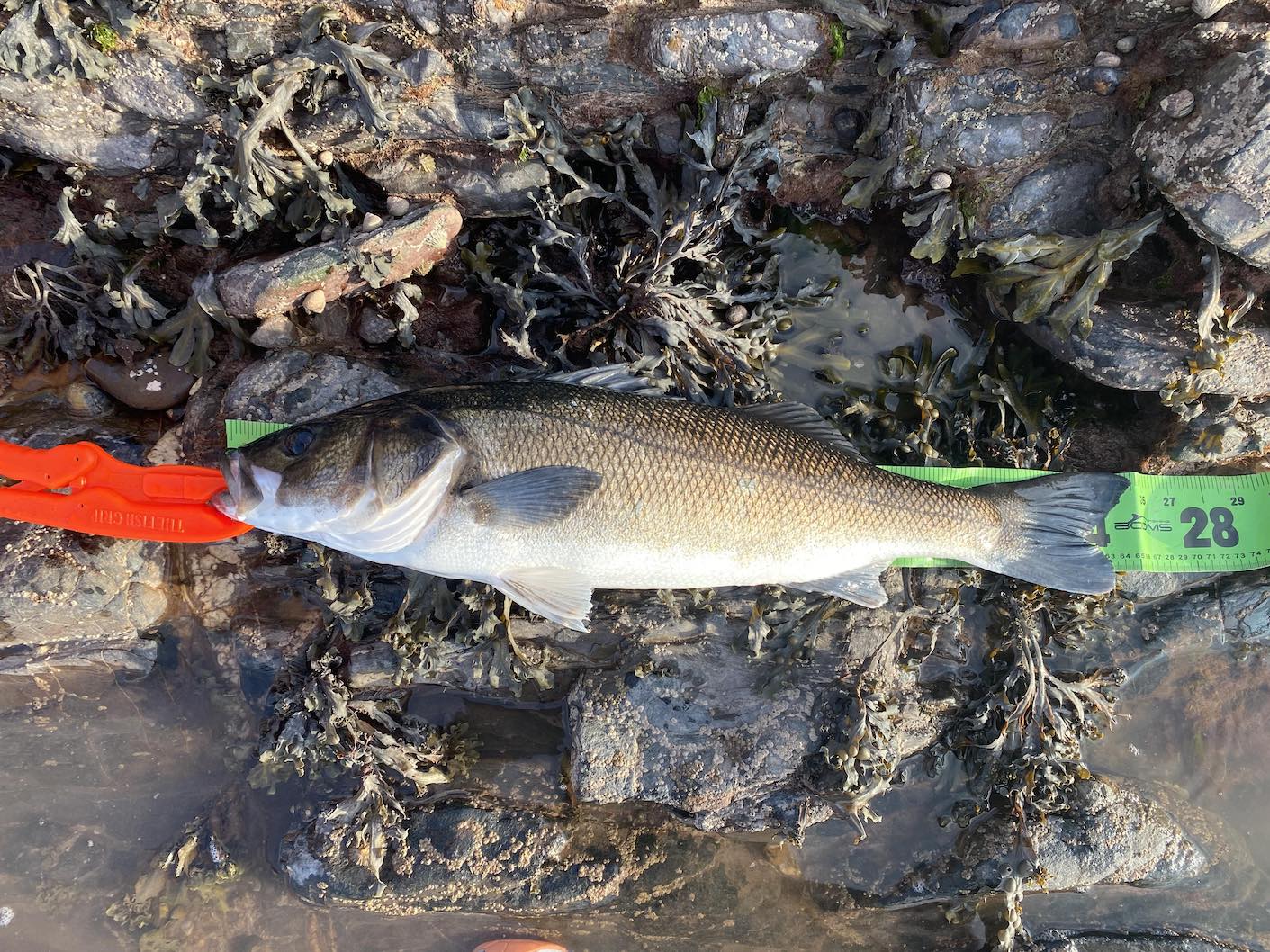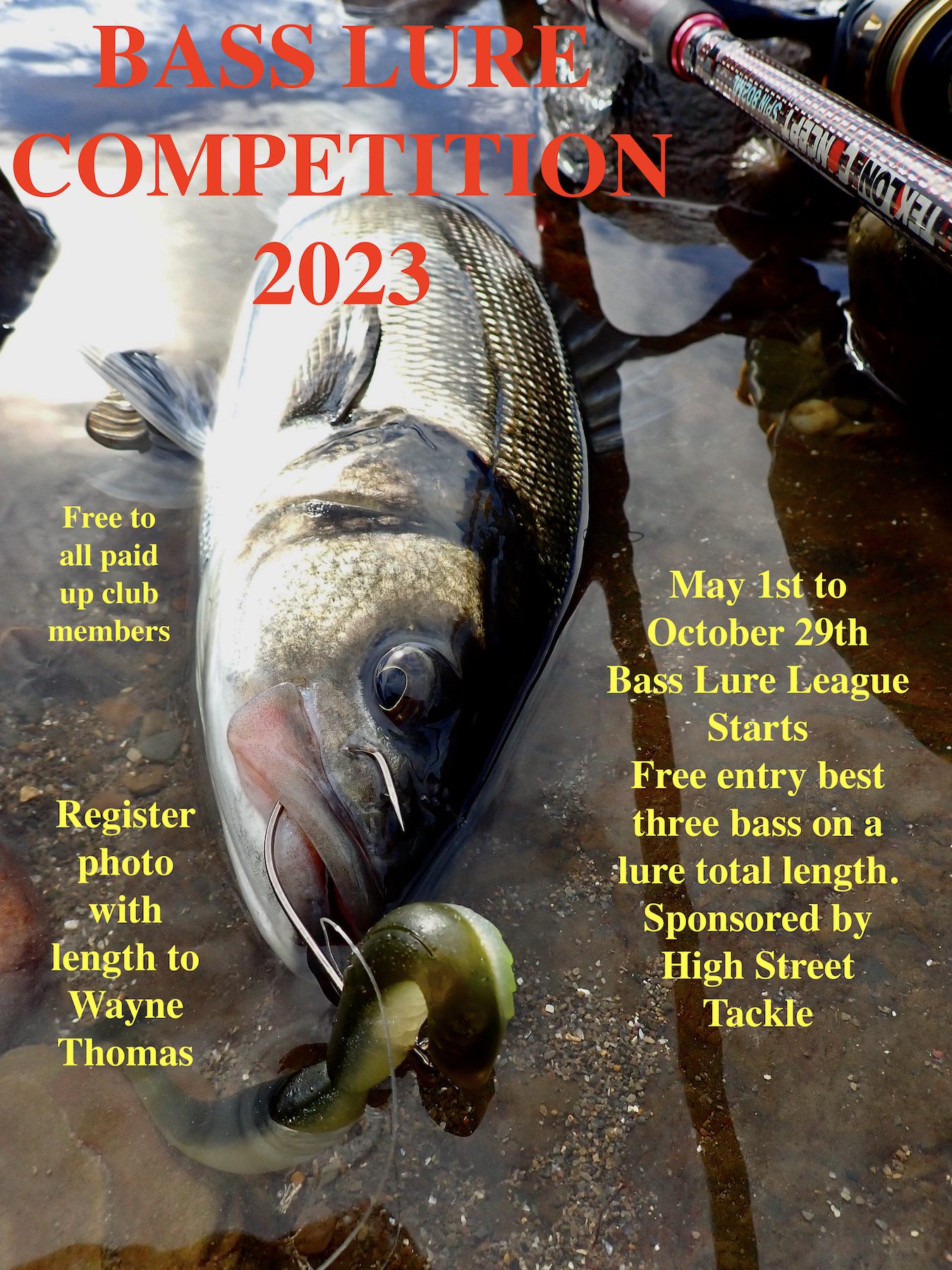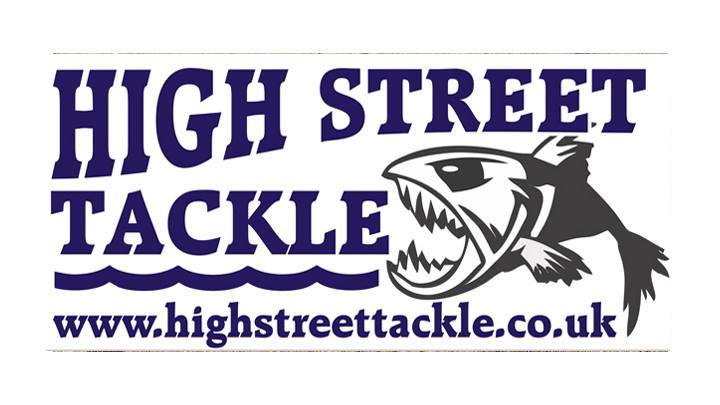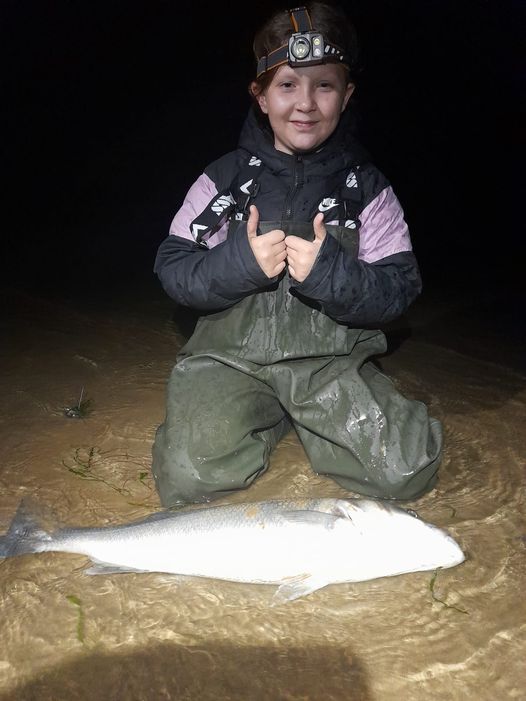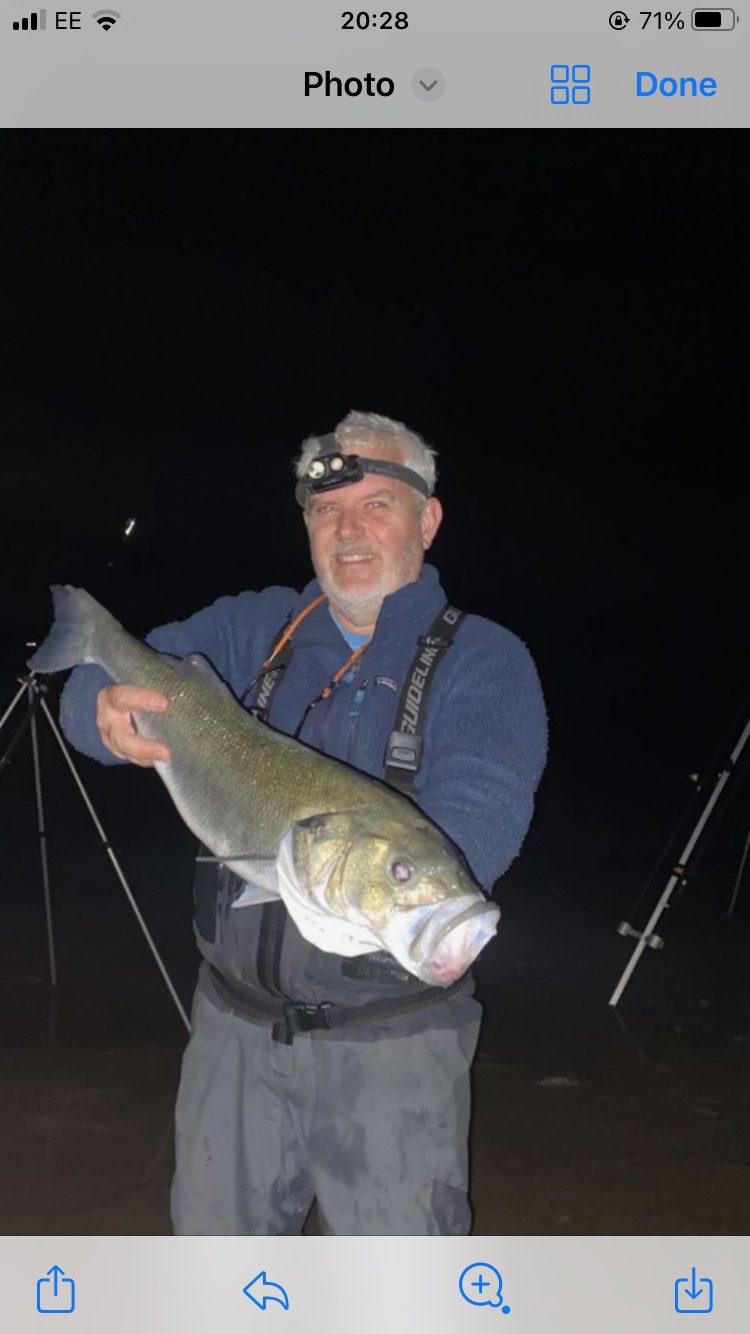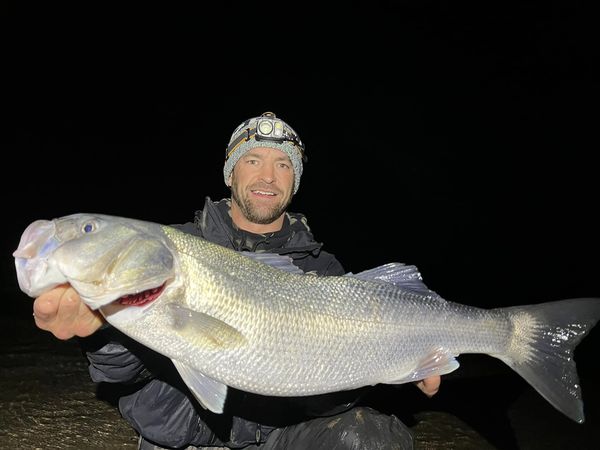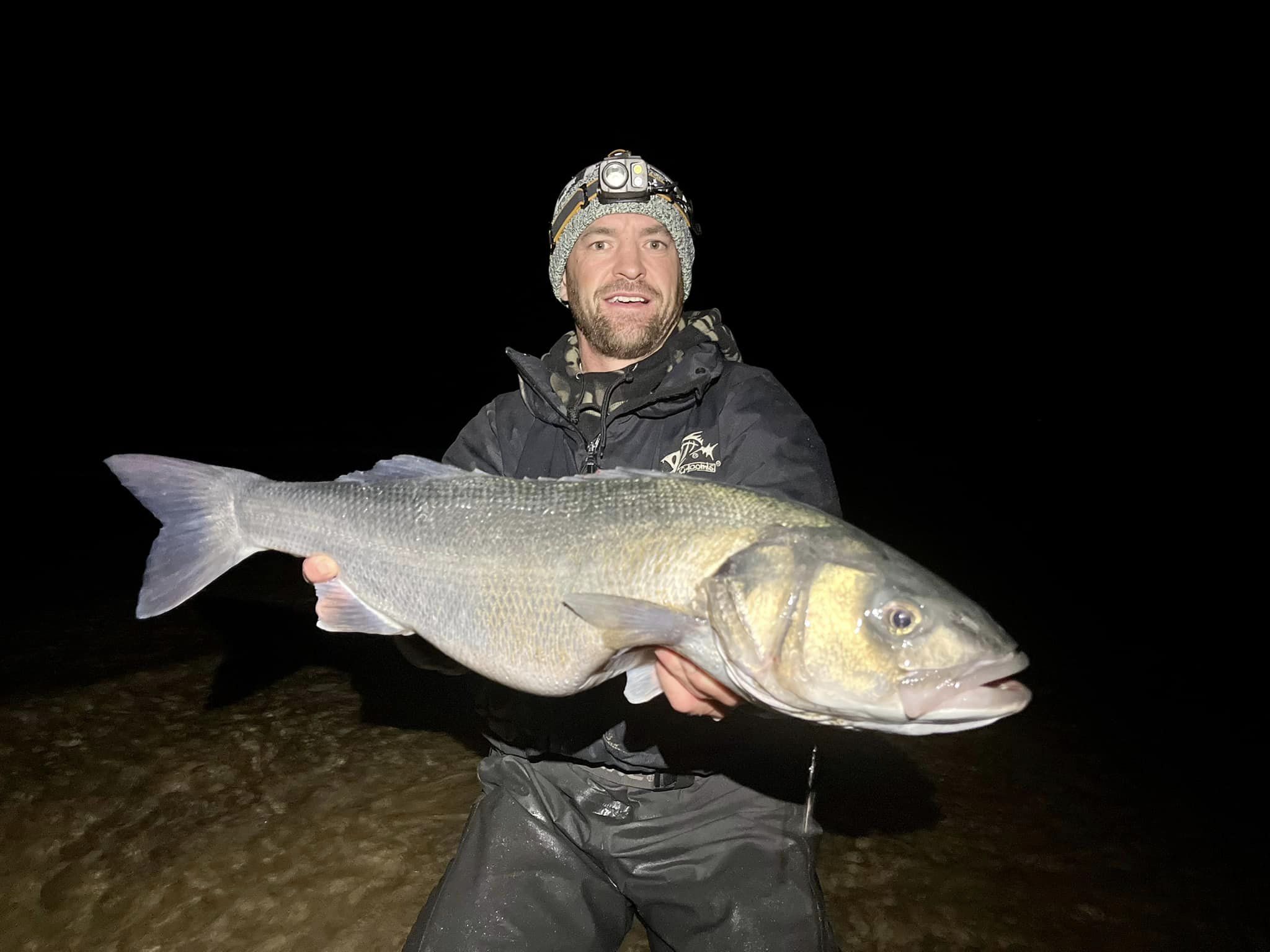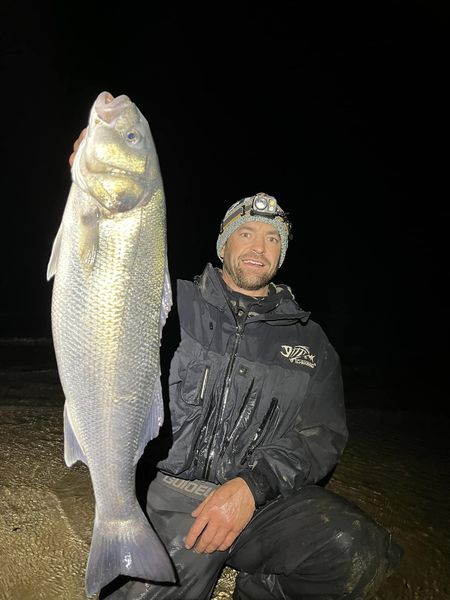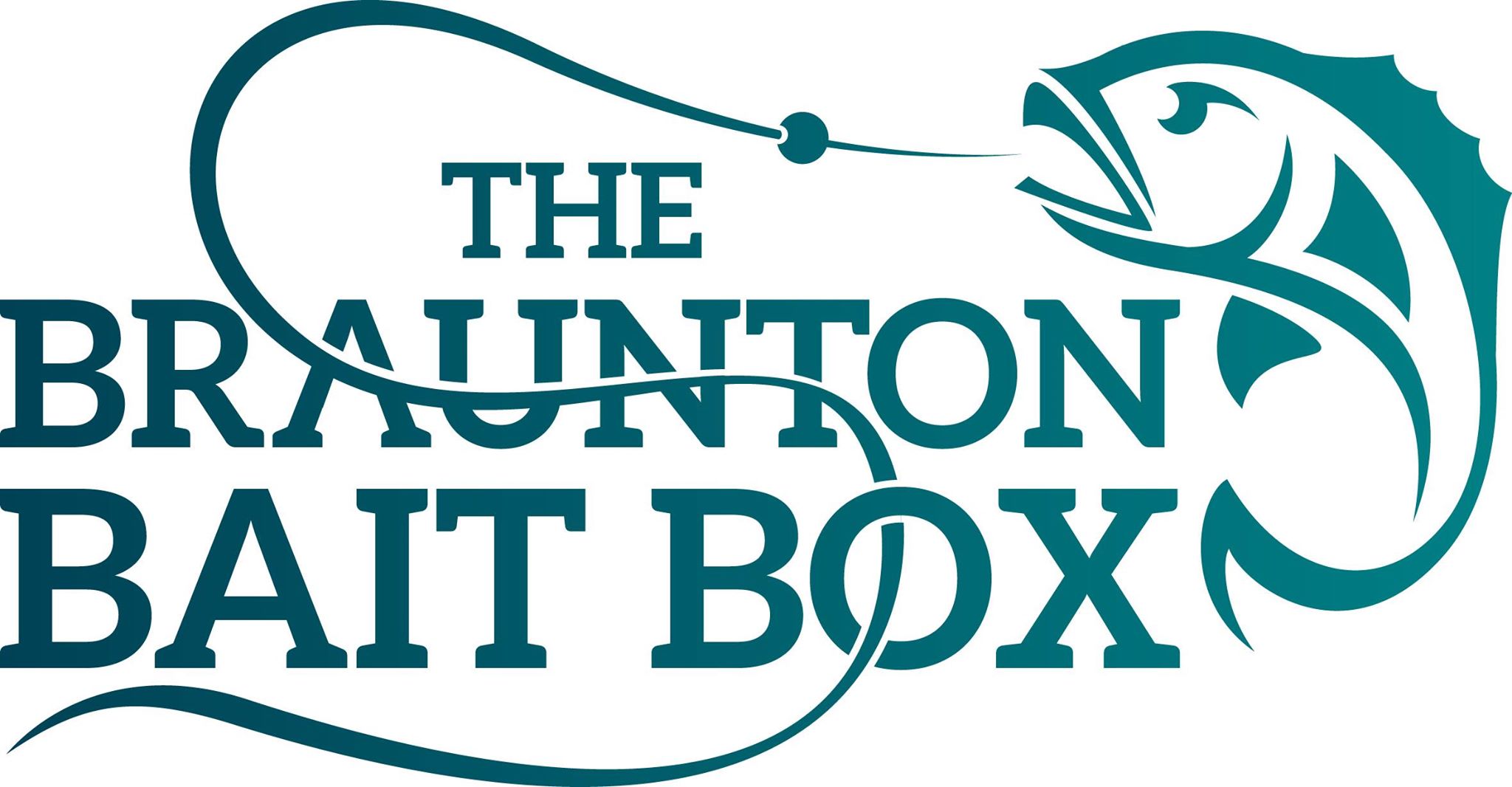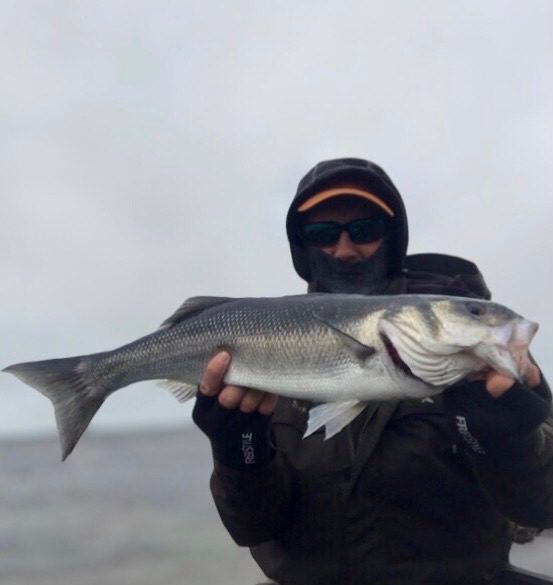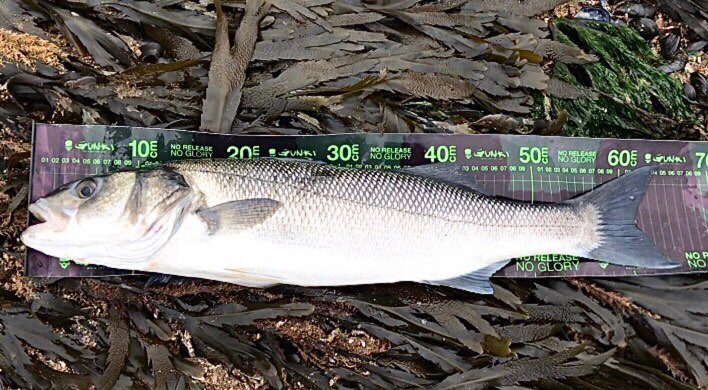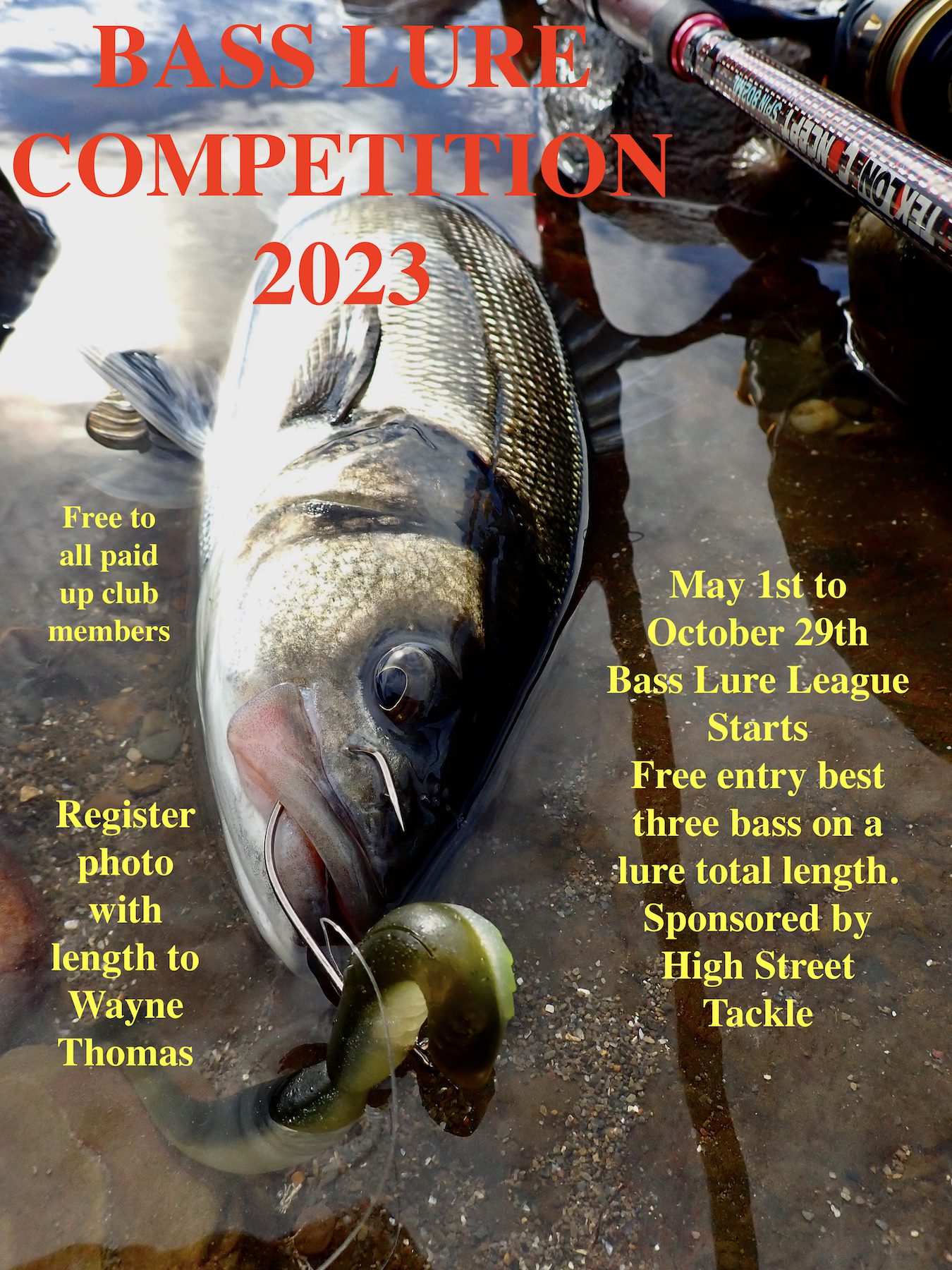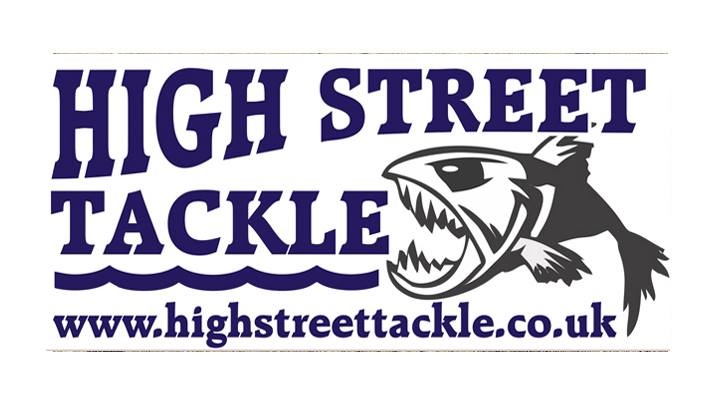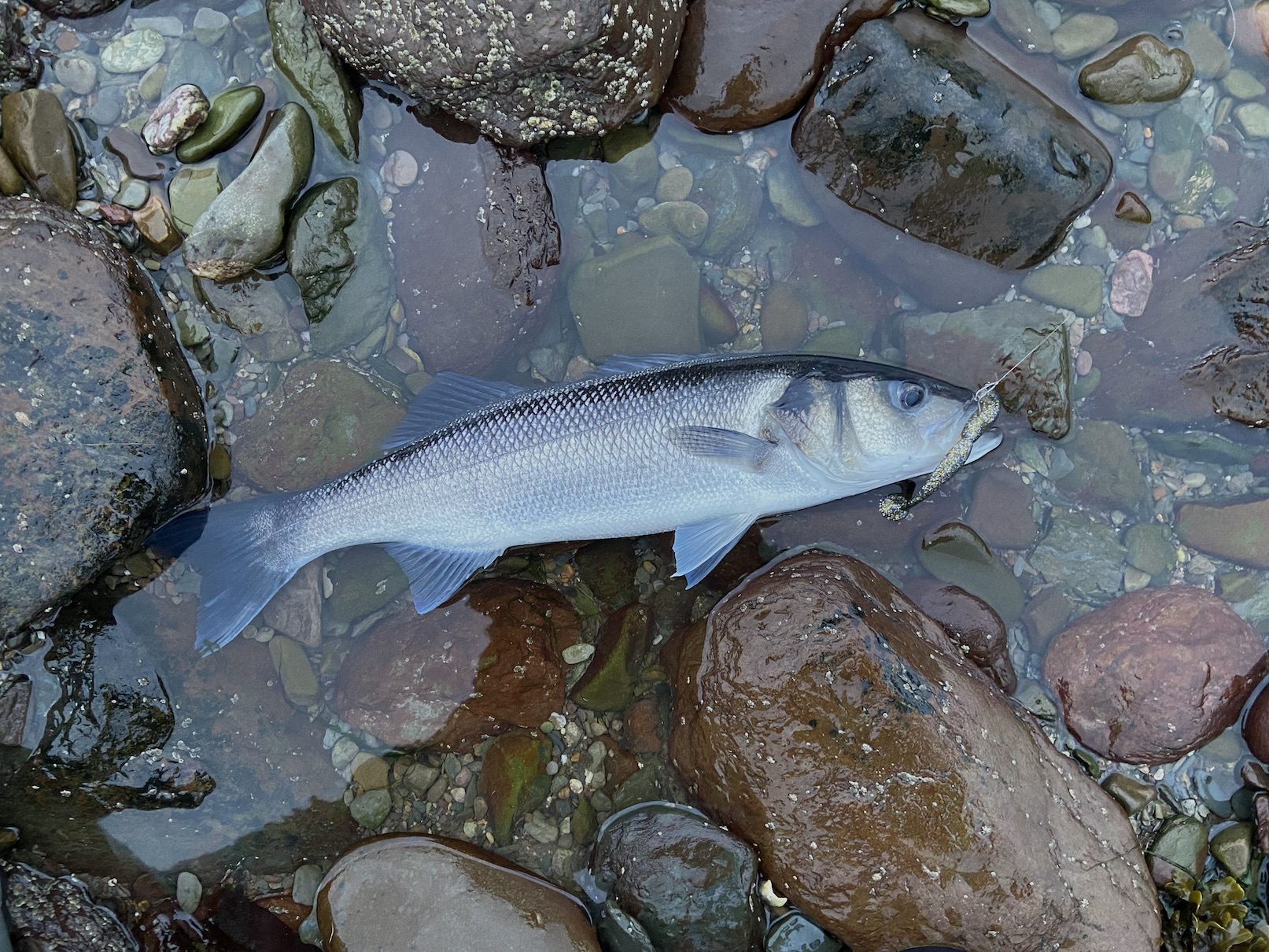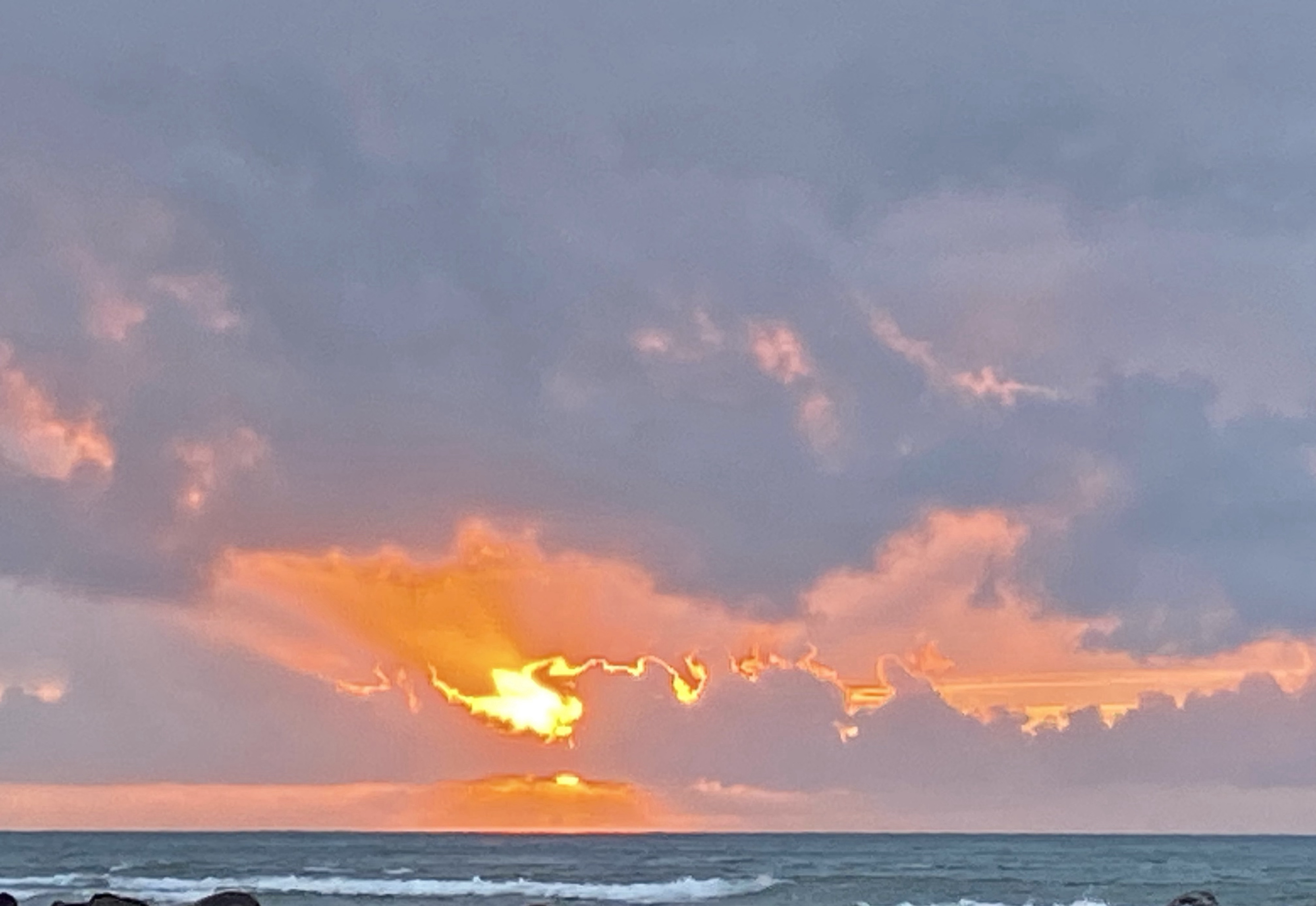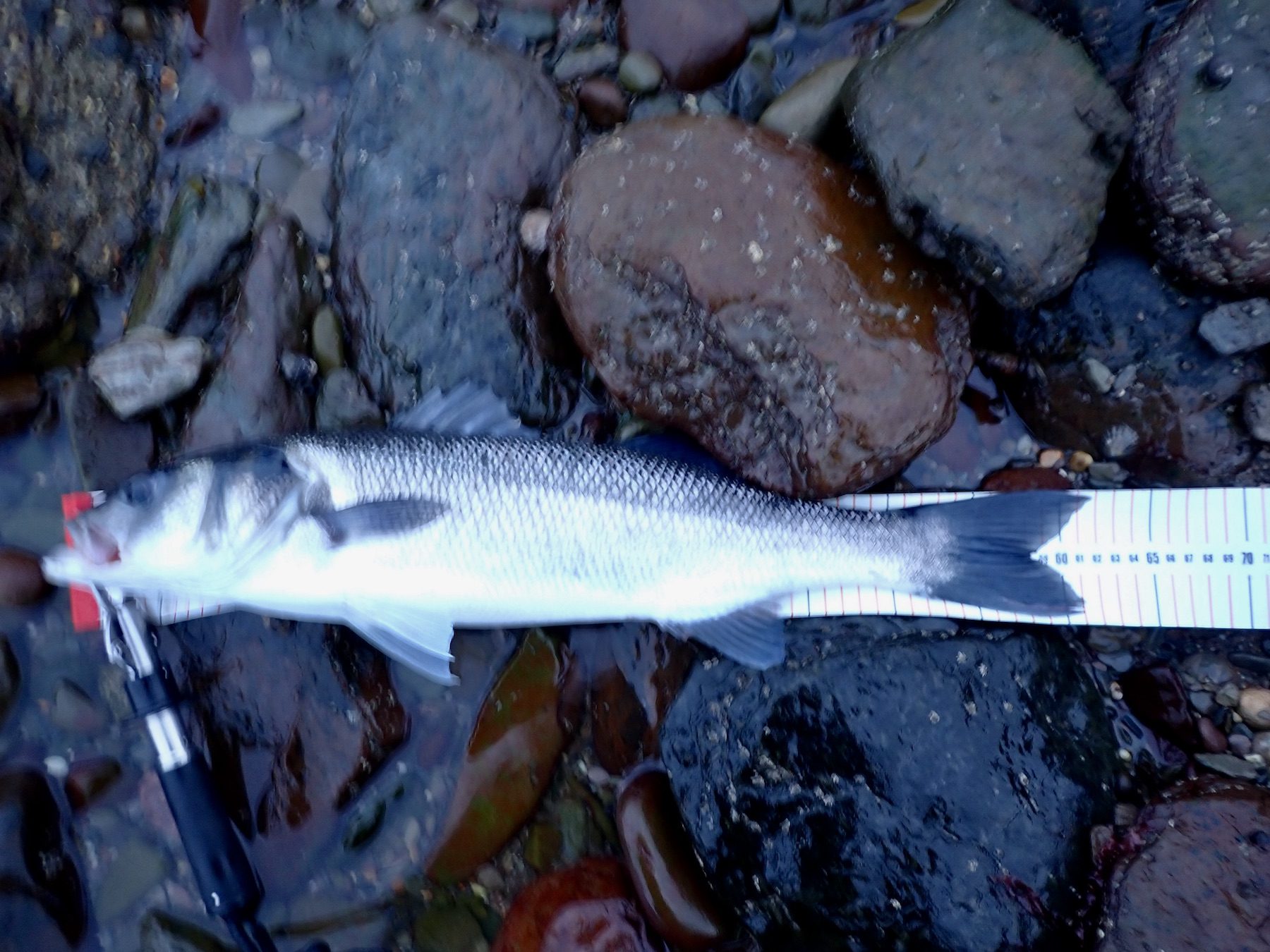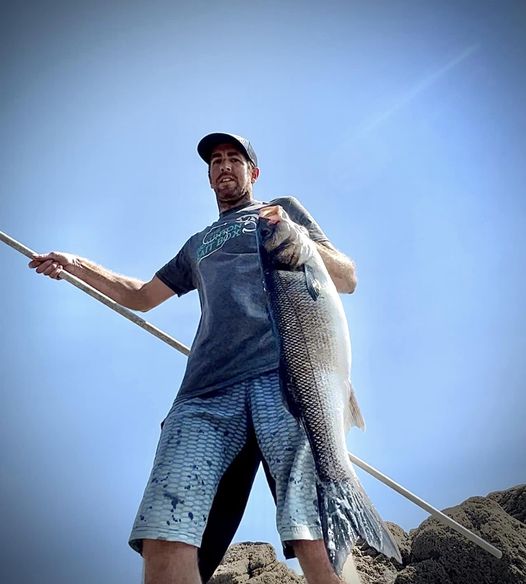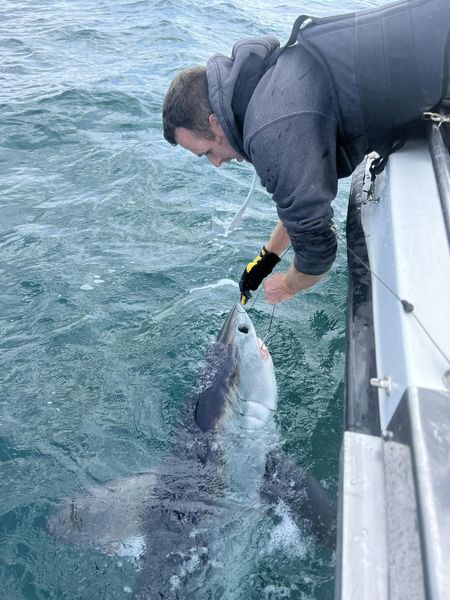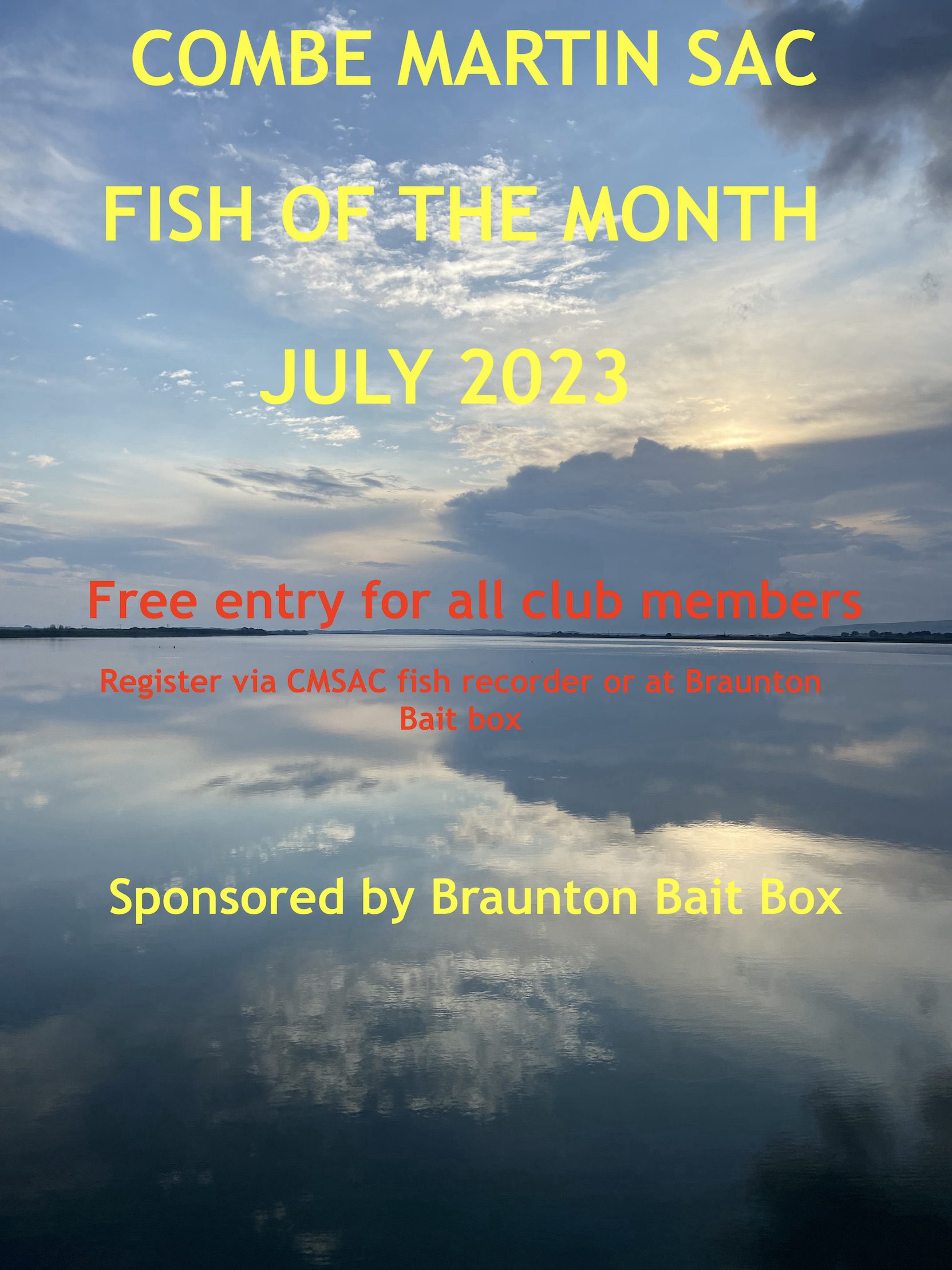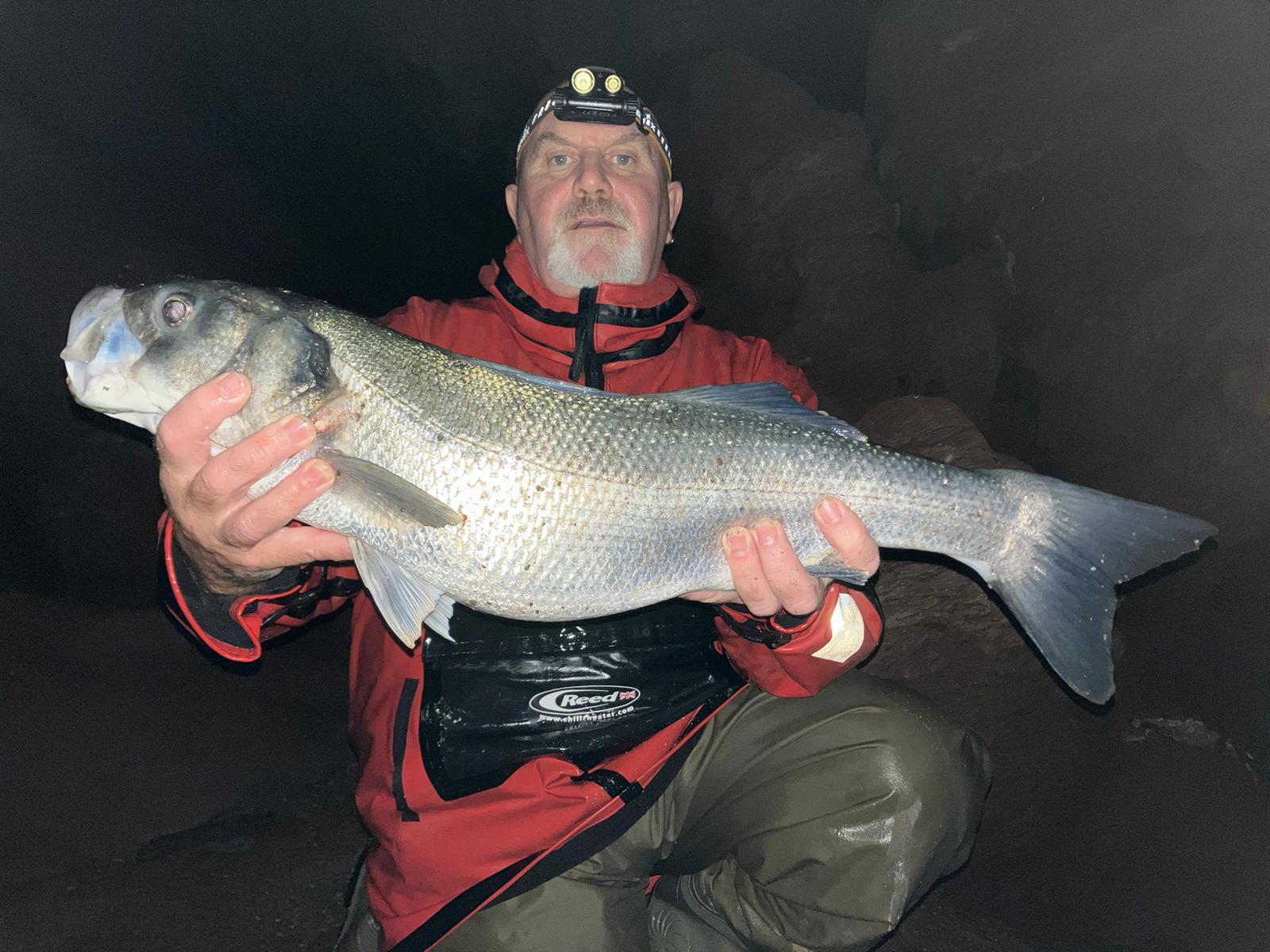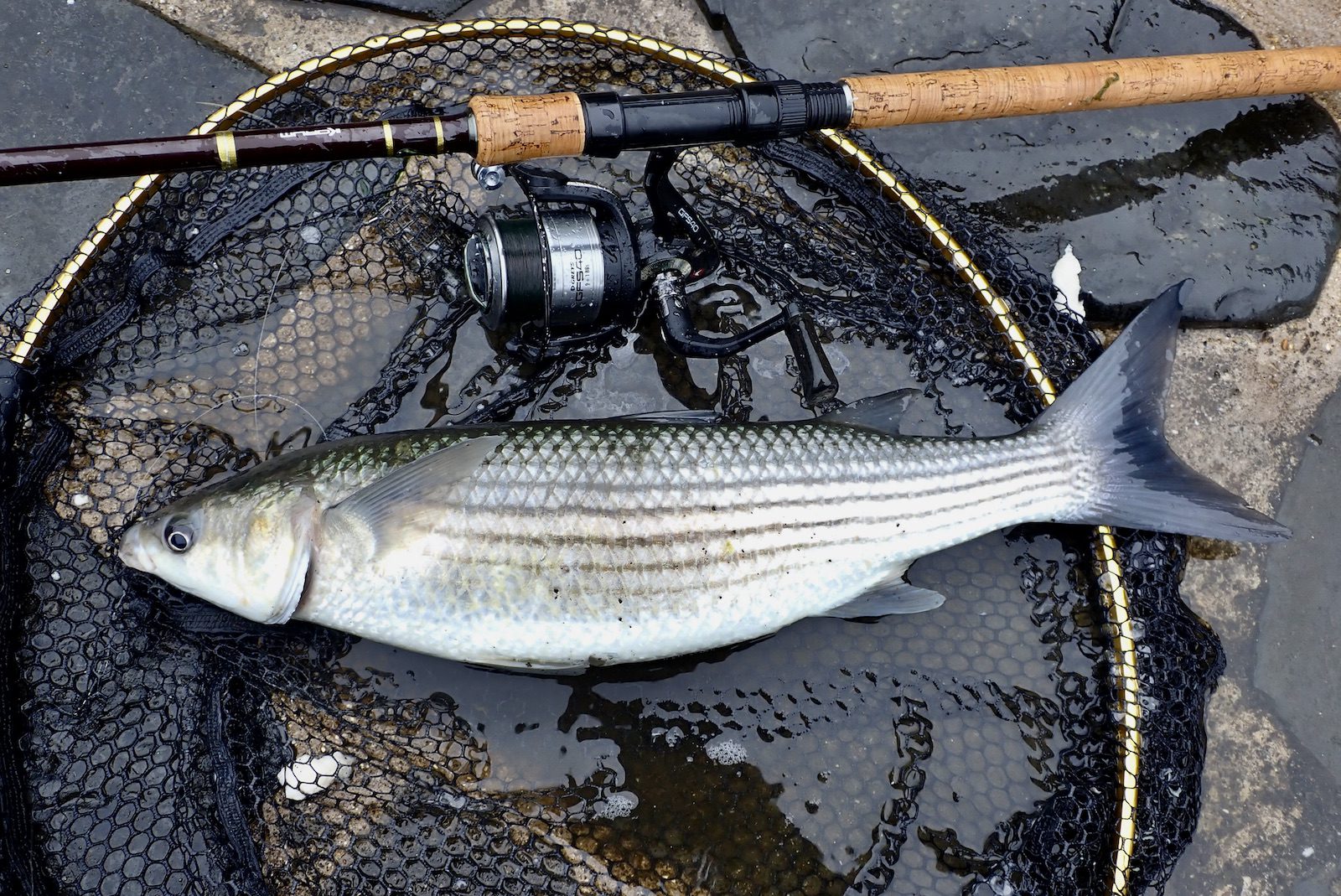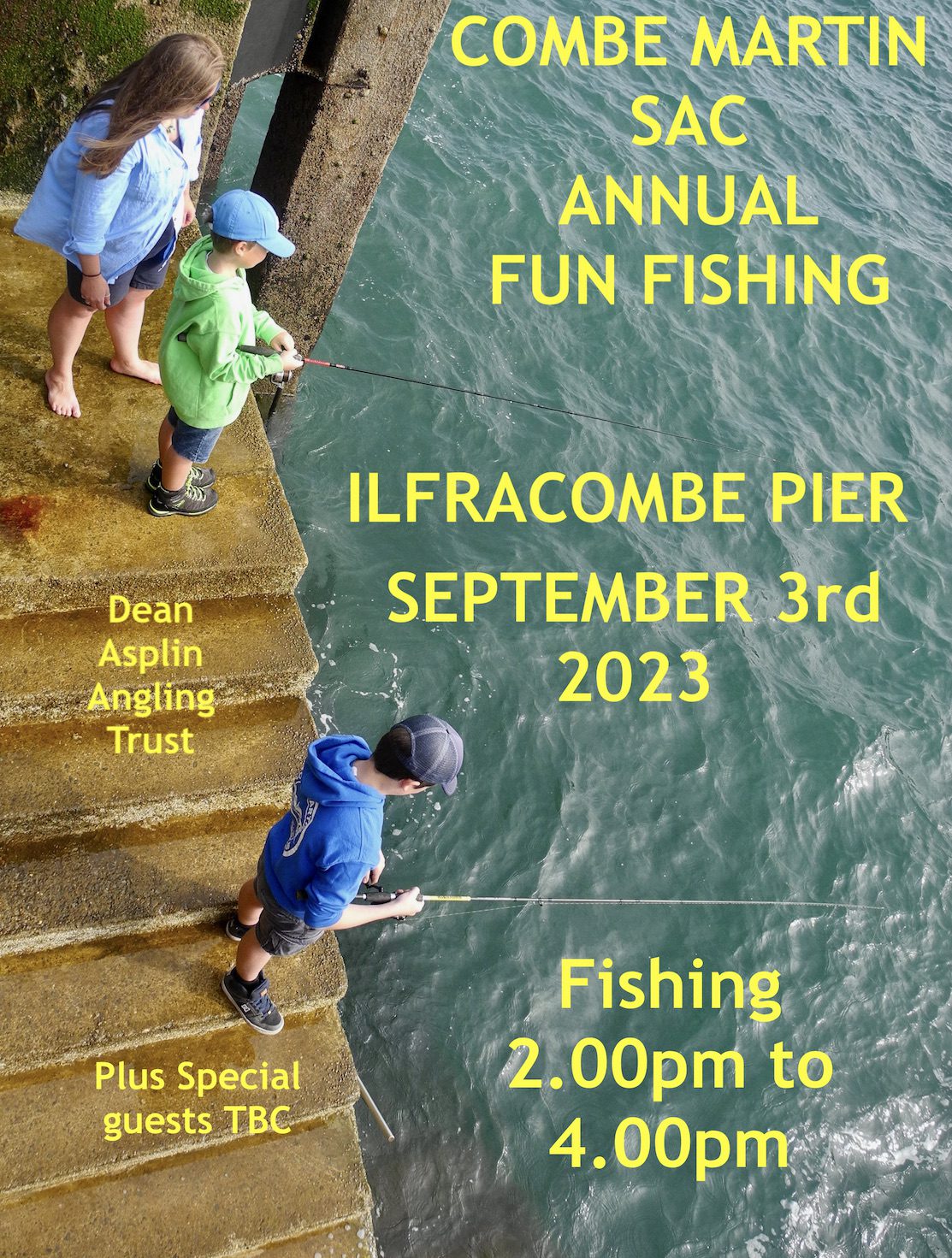Ask many sea anglers which is their favourite species and my guess would be that many would answer bass. This would come as no surprise as the species ticks many boxes. Bass certainly look the part with their streamlined bodies silver flanks and defiant spiky fins.
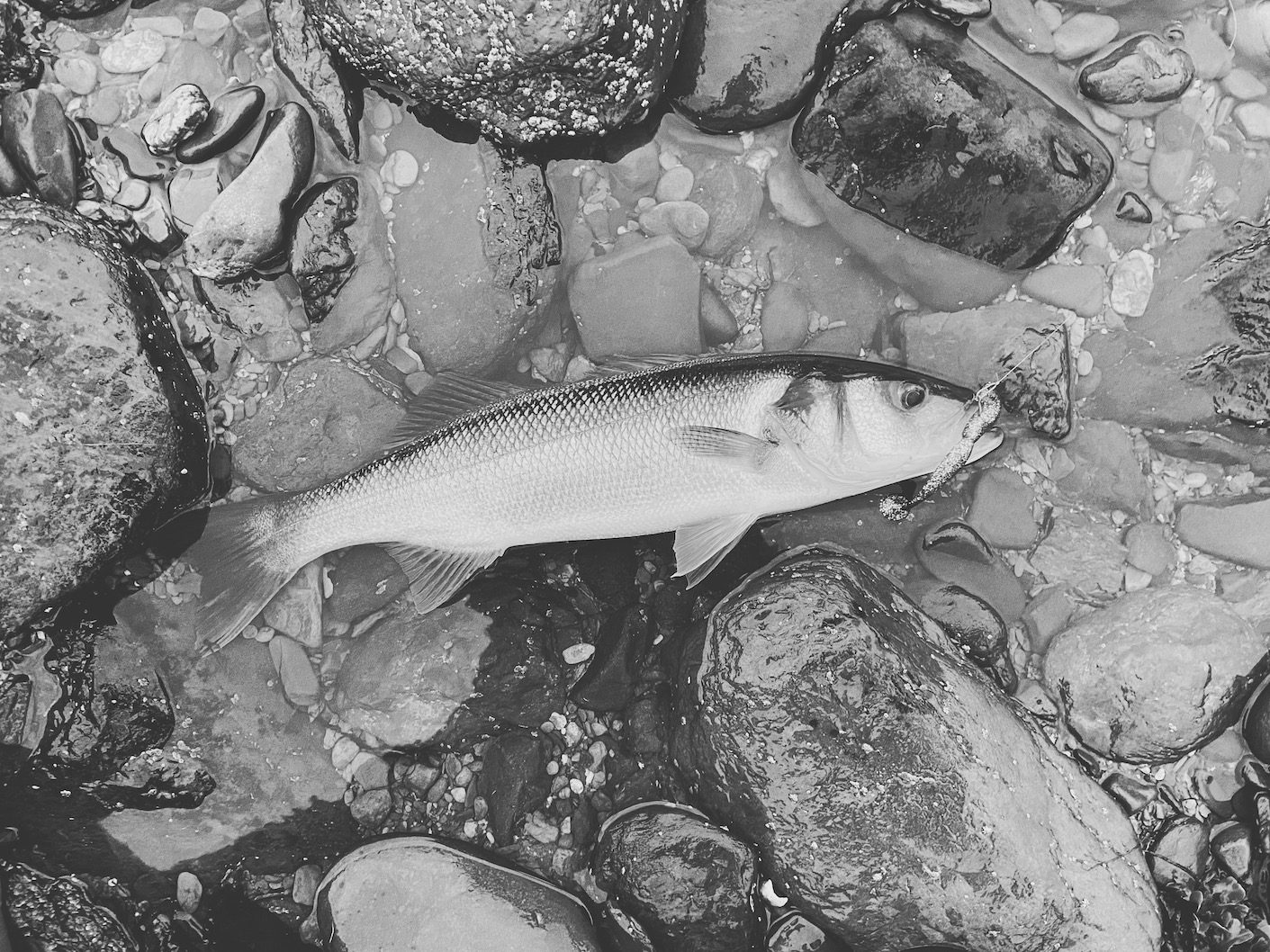
They are also reasonably prolific and can be caught from the warmer waters of the South West throughout the year. Their biggest attribute is perhaps the fact that they can be caught using a wide range of tactics that suit different angling approaches.
Bass can be caught from a wide range of terrains across the region from deep water rock marks, shallow, rocky beaches, harbours, estuaries and those classic sandy storm beaches. The topography will to a certain extent determine the methods employed to catch bass and of course what is currently on the menu. Bass and all fish will go where the food is so this is ideally where the angler should head choosing bait that matches the hatch.
My own bass fishing approach is to some extent determined by who I fish with, what method is likely to bring results and what I enjoy most. In recent seasons lure fishing has to some extent been my go to method producing good numbers of fish over shallow rocky shores.
But to some degree I have always associated bass with shallow sandy surf beaches inspired years ago by the writing of Clive Gammon and others who fished the famous surf beaches of South West Ireland. The evocative picture of a loan angler stood in the surf holding the rod whilst waiting for the electrifying tug of a silver bass hunting in the third breaker.
Whilst this approach has its appeal the modern angler tends to fish in a lazier yet perhaps more effective way. My good friend Kevin Legge has fished North Devon’s surf beaches for several decades and I always enjoy a session with Kev whose confidence and experience always inspires. Kevin’s approach is in some ways similar to that of the modern carp angler anchoring baits far out in the surf relying upon the large sharp hooks to self-hook the fish against the breakaway lead.
A brisk westerly breeze was blowing when we arrived at the beach to coincide with a rising tide and the onset of night. A moderate surf was pushing in and at times it surged up the sand making fishing a little difficult. Kev doesn’t relish a surging push like this as it seldom results in good catches. But persistence can pay off in fishing and with a bait in the water you never know what is lurking out in the dark.
We fished fifty yards or so apart each anchoring two baits out in the surf. I had elected to use joey mackerel on each rod casting out as far as I could and then walking back as the tide flooded until depleting line on the reel forced a recast.
After a couple of hours Kev wandered over with a smoothound estimated at 8lb and tempted on a squid bait. Apart from this the baits had been untouched throughout.
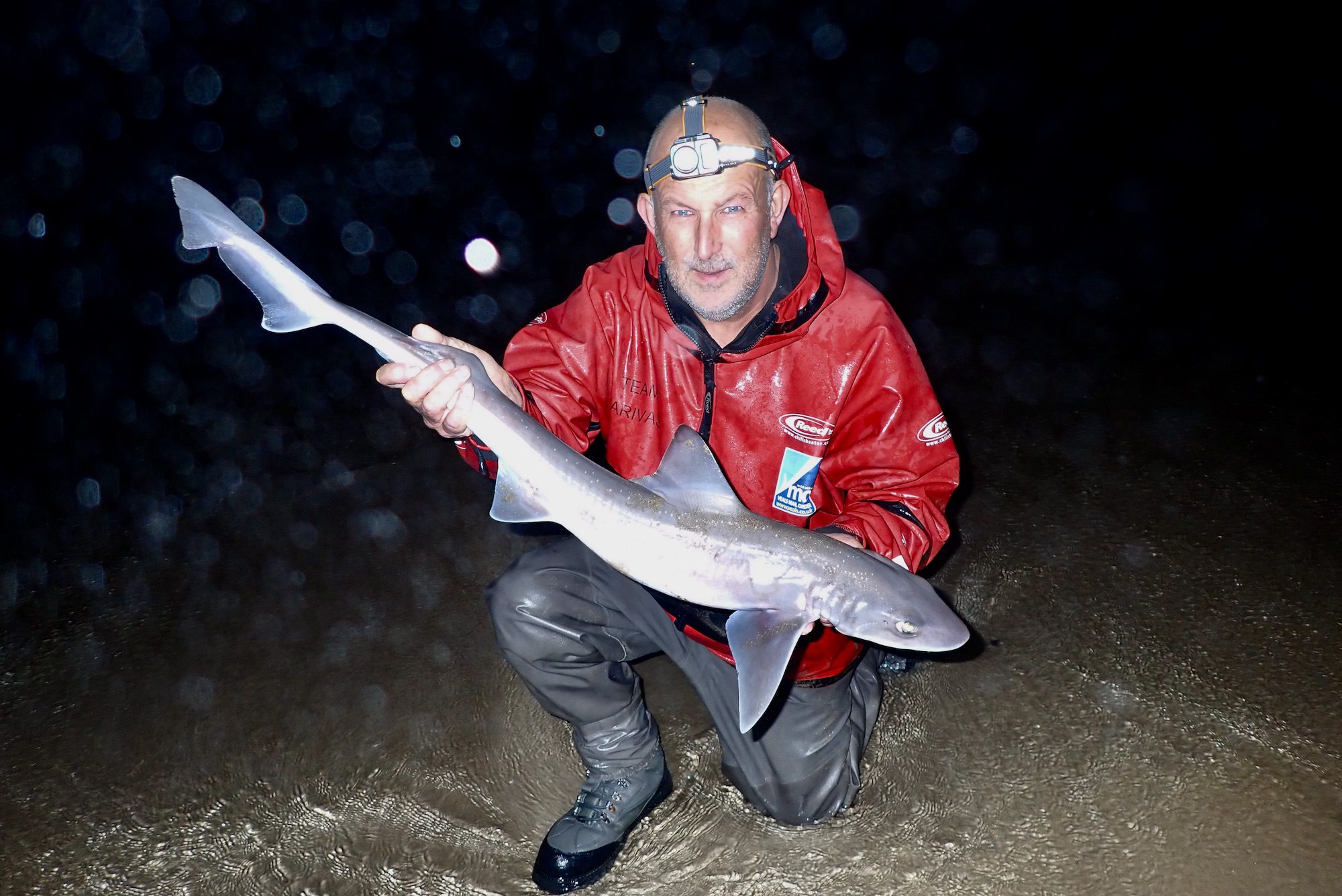
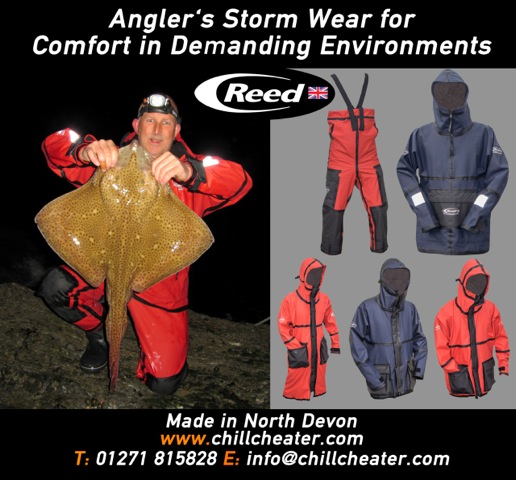
The brisk breeze drove spells of rain and drizzle into the beach and I pulled up my hood whilst I watched the rod tips for signs of life. The distant lights of seaside towns and villages flickered from across the bay and ships lights shone from out on the sea. Standing alone on the sands was liberating immersed in the natural world. Bright eyes shone in the headlights beam as a fox approached. Ever resourceful they have learnt that anglers bring bait that makes a tasty meal. For this reason, a tough bait box is essential to repel their efforts to steal from the bags left away from the incoming tide.
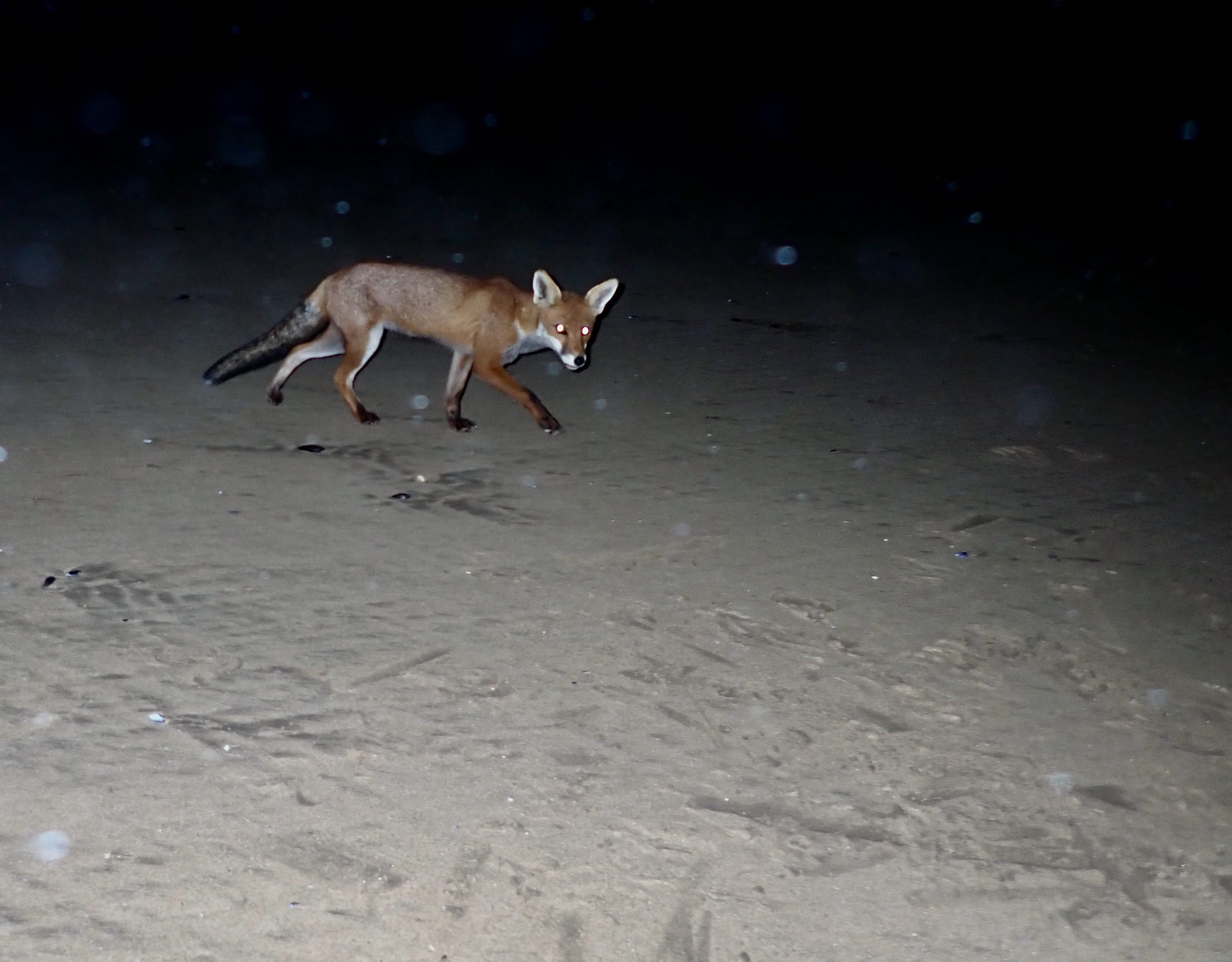
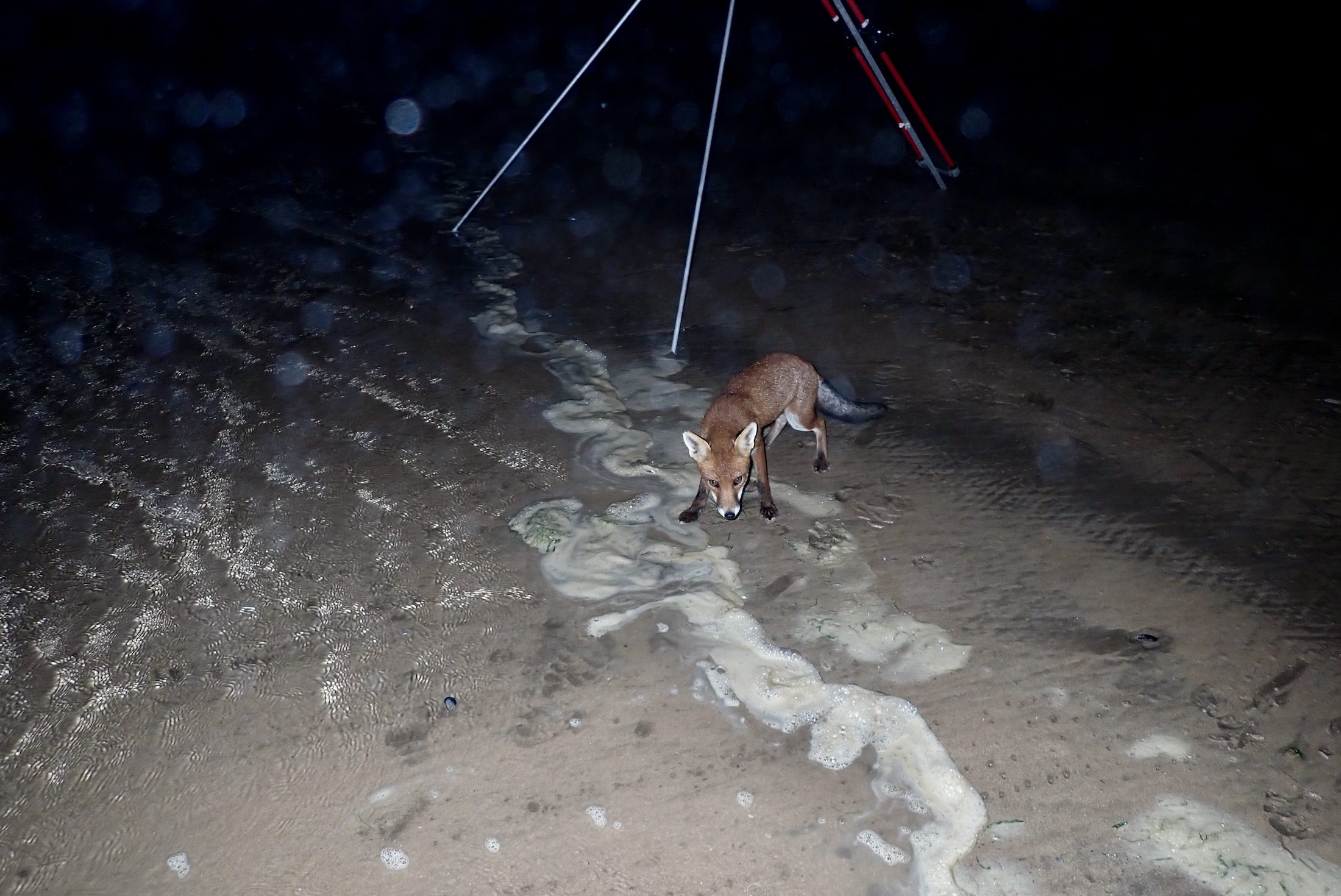
As I removed old bait from the hooks the fox showed little fear and came right up to me despite my initial efforts to drive it away. The fox was certainly persistent and at times sat patiently behind me on the wet sand like a dog waiting for his meal. Eventually I warmed to my companion and allowed him to take the discarded bait each time I reeled in to refresh.
The best time for bass is often close to high water which was at 01:40am. We decided to call time at around 1:30am and as I watched the rod tips intently a gentle nod of the tip caught my attention. I picked up the rod and felt a slight tug followed by a slight slacking of the line. Another slight tug followed and I suspected a dogfish. I raised the rod and began retrieving not sure if anything was attached. A few lunges on the line as the tackle was brought into shallow water indicated that a fish was attached. A pleasing silver bass of around 3lb 8oz was dragged across the sand. I despatched the fish, descaled and gutted it as it was a perfect eating size. I return all bass I catch of over 6lb keeping the occasional fish for the table as it is one of my favourite eating fish.
The larger bass are valuable breeding stock and their flesh is often riddled with worms that although harmless are not very appetising. The minimum size for bass is 42cm though I would return any bass under 45cm. Anglers are permitted to take no more than two bass per day full guidance can be found at https://www.gov.uk/government/publications/bass-industry-guidance-2023/bass-fishing-guidance-2023
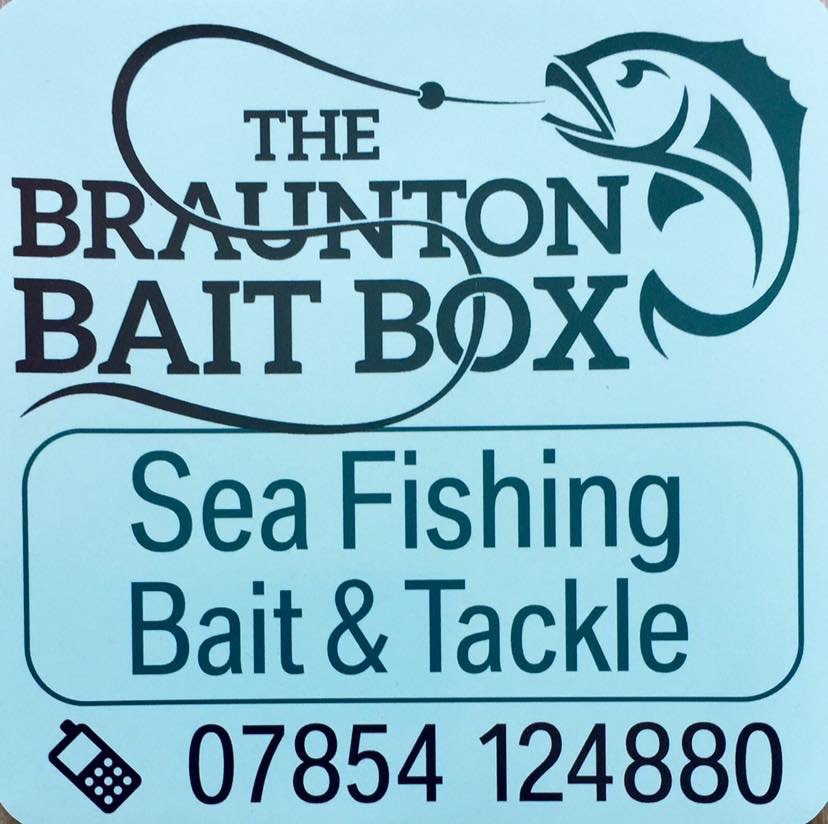
As I packed away the tackle Kev walked over to show me the smallest ray he had ever caught. A tiny ray that sat in the palm of his hand that had fancied a whole mackerel.
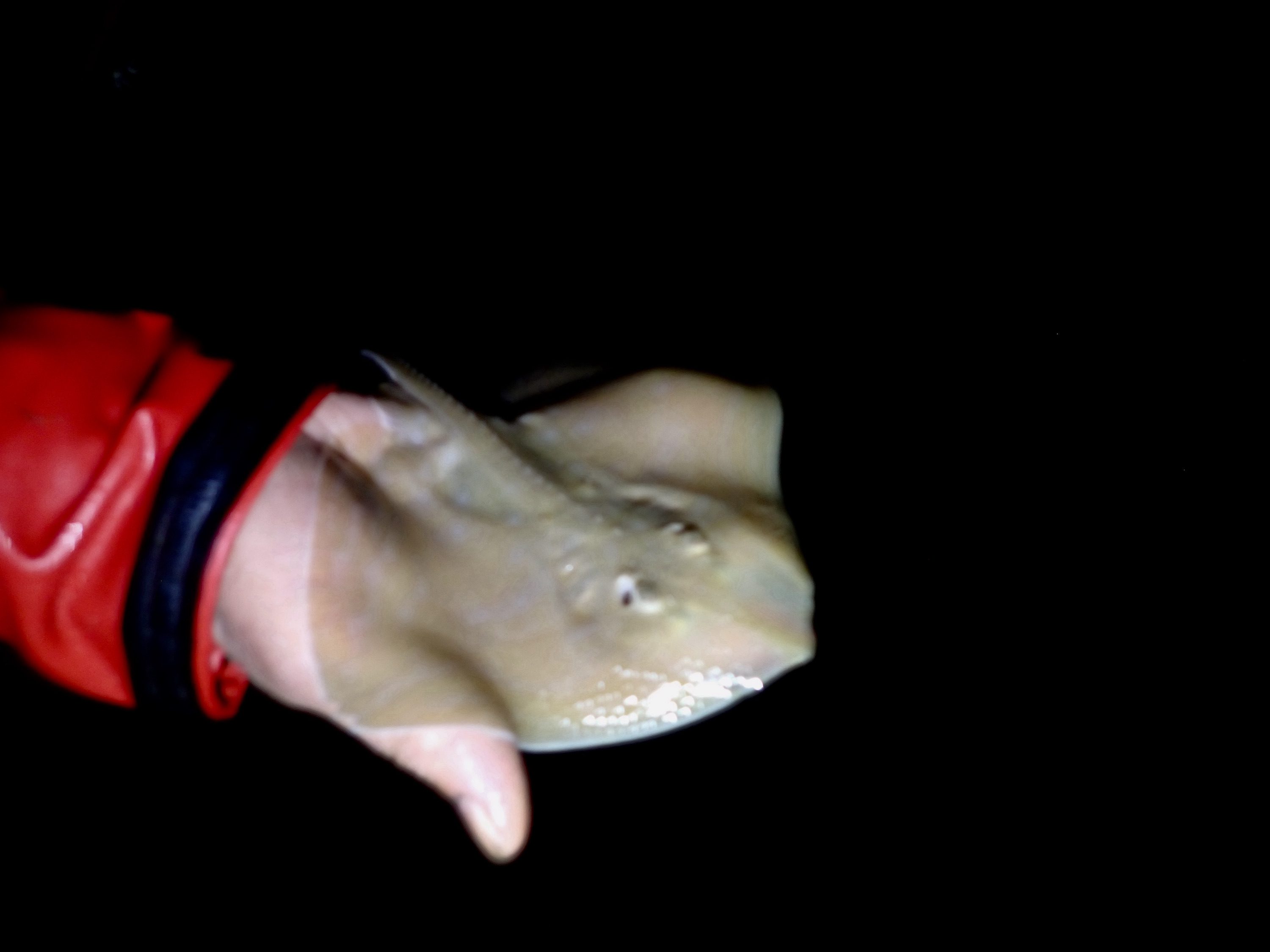
It had been an enjoyable session made memorable by a visit from a wild fox and by just being there as the tide flooded as we puzzled over the pages of natures never ending script.

